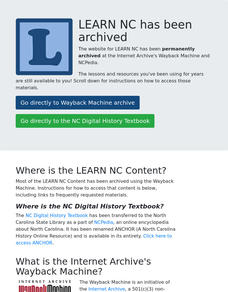Curated OER
Types of Chemical Reactions
High schoolers conduct labs to gain an overview of chemical reactions. They observe examples of synthesis, decomposition, single displacement and double displacement reactions. They identify certain products by the use of litmus and...
Curated OER
Type of Chemical Reactions: Single and double displacements
Students are taught that combustion of carbon in charcoal briquetts produces heat and light. They are shown how to find single displacement and double displacement. Students solve problem set of single and double displacement.
Curated OER
Micro-Reaction Lab: Gas Prouducing Reactions
Students investigate single displacement or double displacement reactions. They have to identify the type of gas produced by filling in the blanks to a data and observation sheet. Also, having to be done is writing balanced equations for...
Curated OER
Types of Reactions (Demonstration)
Students visually observe chemical changes that occur when various solutions are combined. Teacher explains chemical reactions that are happening.
Curated OER
Acids, Copper, and Zinc
Students observe chemical reactions using post-1982 pennies. They observe the reaction of an acid with zinc but not copper under the same conditions over a two week period.
Curated OER
Organic Chemistry II Review Questions
For this chemistry worksheet, students determine the order of reactivity toward displacement in each of the series listed. Then they respond to several multiple choice questions as they relate to compounds and solutions. Students also...
Curated OER
What Floats Your Boat?
Students discover the Archimedes principle through a buoyancy experiment. They measure the water displacement of a lump a clay which is denser than water then reshape the clay into a bowl which floats but displaces more water.
Curated OER
Code Makers - Electron Configuration, Aufbau Principle
Learners write the electron configuration of elements using the Aufbau principle. In this chemistry lesson, students build their own key that demonstrates the principle.







